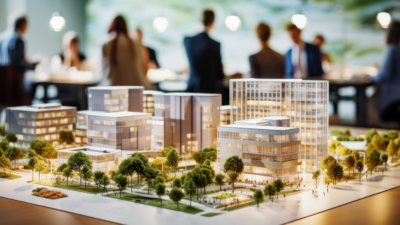For the past two years, Americans have experienced an unprecedented period of stress and uncertainty. Self-isolation and the unknowns of the pandemic along with the ongoing social issues, political climate and economic instability have compounded the challenges many are facing. As a result, rates of anxiety and depression have increased 25%, according to WHO.
This rising demand for mental health treatment has impacted healthcare real estate, from the private equity investors to growth within the medical office asset class.
Private Equity Investment Activity
Last year, investors poured $5.5 billion into mental health technology startups around the world, up 139% from 2020.
The number of behavioral-health acquisitions jumped by more than 35% from 2020 to 2021, with 153 acquisitions – 123 of those involving private-equity firms.
Overall, healthcare investment from PE is expected to continue. At the 2022 BOMA conference, survey data was presented that shows healthcare is the leading sector where investors are planning to invest more capital.
Also at the conference, Shawn Janus, Colliers’ National Healthcare Director, stated: “[Healthcare real estate] is very recession-resistant. It is not nearly as affected by the downturns. We also don’t have the wild swings on the upside, and I think that’s attracted investors because [it’s] a safe haven…It’s definitely become more of an accepted asset class.”
The Implications for Medical Office
In the investment world, medical office buildings (MOB) continue to be especially attractive. No longer considered a niche asset class, they have quickly become a staple in many portfolios, as evidenced by the fact the total MOB investment hit a record high of $17.4 billion in 2021.
Demand for medical offices streams from wide array of healthcare providers: urology, OB/GYN, clinical and more. However, the sharp increase in behavioral health needs has been a leading driver in strong performance of MOBs.
Counseling centers, psychologists, and private practices are mostly located in medical office buildings – an asset class that continues to thrive. MOB’s deliver better access for communities and are more conveniently located, mixed with retail and other health providers.
Despite many expanding into MOBs and other locations, demand for mental health services continues to outpace practitioner availability. This diminishing capacity has forced 65% of behavioral health organizations to cancel, reschedule or turn away patients.
To fill that gap, virtual technology is becoming crucial in getting individuals the mental care they need. Data from 200 clinics show 87% of mental-health related appointments in May 2022 were virtual, up from 74% in May 2020. Experts believe this utilization of telehealth will likely continue into the future, as it increases the convenience and accessibility for patients seeking mental health treatment.

 Sloane Nichols
Sloane Nichols

 Shawn Janus
Shawn Janus
